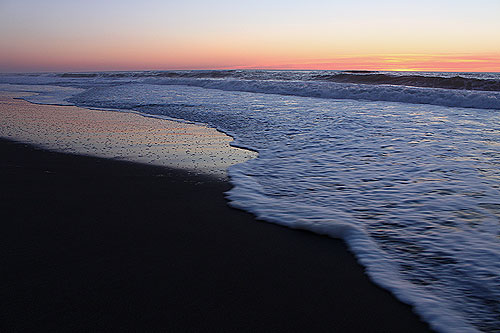 |
Seismic 'Time Bombs' Around Earth Predicted by Oregon Coast Scientist
Published 05/08/2015

(Newport, Oregon) – A geologist from the Oregon coast has made some landmark discoveries and predictions about earthquakes around the world, and will soon be publishing more findings in a book. (Above: the Oregon coast is due for some major quake and tsunami acitivity.)
Robert Yeats, who works out of Newport's Hatfield Marine Science Center and Oregon State University in Corvallis, has in the past made some remarkable calls about where large earthqakes could hit – something Hatfield scientists are becoming known for after they recently pinpointed sea floor volcanic eruptions off the Oregon coast.
Recently, Yeats was discovered to have accurately described the major quake hazard at Nepal, when that area was struck with a magnitude 7.8 this month. Yeats made his findings known about the area last year. Five years ago, he correctly pointed out another such faultline in Haiti. A week after his interview on the subject, the region was shaken badly and more than 100,000 were killed.
Yeats is not predicting when the quakes happen – like some sort of modern day Nostrudamus – but instead showing an uncanny ability to scientifically determine the locations of what he's called “seismic time bombs.”
Now, Yeats is soon to release a new book, “Earthquake Time Bombs,” which will be published later this year by Cambridge University Press. Between these pages, he looks at other time bombs around the planet. Among them: a region he has visited frequently in the past 30 years - the Himalayas, including Kathmandu, Nepal, a city of more than a million people.
Yeats said there are several spots around the world where large cities sit close to a major plate boundary, creating the potential for seismic devastation. These include: Tehran, the capital of Iran; Kabul in Afghanistan; Jerusalem in the Middle East; Caracas in Venezuela; Guantanamo, Cuba; and the well-known Los Angeles, California area. One is particularly close to home: the Cascadia Subduction Zone off the northwestern United States and near British Columbia.
“These places should take lessons from the regions that already have experienced major earthquakes, including Nepal,” said Yeats, who is with OSU’s College of Earth, Ocean, and Atmospheric Sciences.
Many areas, like Port au Prince or Kathmandu, sit above tectonic boundaries that move at around two-thirds of an inch per year. This slow-grind is triggering quakes periodically. These plates have been moving for the last 50 million years, and eventually the stress builds up enough that they rupture.
“With the assistance of an American non-profit seismology group, the city of Kathmandu created a disaster management unit and a National Society for Earthquake Technology that established committees of citizens to raise awareness and upgrade buildings, especially public schools,” Yeats pointed out. “Other ‘time bombs’ would be wise to do the same.”
Making buildings more earthquake-resistant is imperative for cities near a fault, yet economics often preclude such measures. Yeats said some of the greatest losses in the Nepal quake took place in United Nations World Heritage sites of Bhaktapur and Patan, where ancient buildings had not been strengthened.
Portland and much of the Pacific Northwest also sit along faultlines with major potentials for disaster, and not just because of the offshore tectonic plate activity that sometimes rattles the seafloor some 200 miles from the Oregon coast. Portland is expected to some \day get hit with an enormous earthquake of its own, while the coastal cities of the state have been preparing for tsunami events for the past decade.
See up-to-minute Live Earthquake, Tsunami Updates from Oregon Coast, Washington. B.C., California, Alaska. More of the Hatfield Marine Science Center and central Oregon coast below:




More About Oregon Coast hotels, lodging.....
More About Oregon Coast Restaurants, Dining.....
LATEST Related Oregon Coast Articles
Whale Body Parts Found on Oregon Coast - Two Whales Strand on Washington Coast |
Back to Oregon Coast
Contact Advertise on BeachConnection.net
All Content, unless otherwise attributed, copyright BeachConnection.net Unauthorized use or publication is not permitted
Secrets of the Season |
Unusual Travel Articles TravelParanormal.com allows you to submit your own creepy tale or debunk one - or see up-to-the-minute news headlines about travel and the paranormal. News Headlines from All Over Oregon Need to scan Oregon headlines? Constantly updated news from all over Oregon: a comprehensive, up-to-the-minute display of news headlines from a variety of media Oregon Coast Oceanfront Lodging, Hotels, Rentals |






































